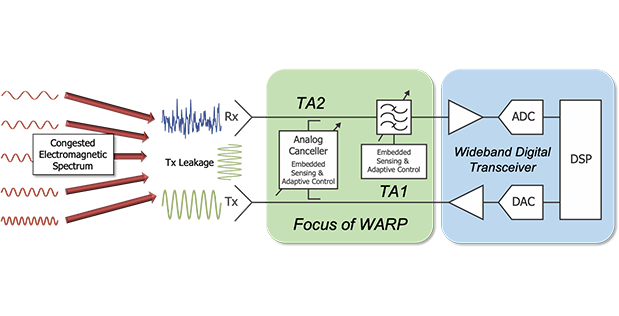...
DEFENSE ADVANCED RESEARCH PROJECTS AGENCY
CACI, Inc. — Federal, Florham Park, New Jersey, was awarded a $10,594,388 modification (P00007) to previously awarded cost-plus-fixed-fee contract HR001121C0053 for the Wideband Secure and Protected Emitter and Receiver (WiSPER) program. The modification brings the total cumulative face value of the contract to $22,137,673 from $11,543,285. Work will be performed in Florham Park, New Jersey (81%); San Diego, California (15%); and Boston, Massachusetts (4%), with an expected completion date of July 2024. Fiscal 2022 research, development, test and evaluation funds in the amount of $939,036; and fiscal 2023 research, development, test and evaluation funds in the amount of $2,544,000 are being obligated at time of award. The Defense Advanced Research Projects Agency, Arlington, Virginia, is the contracting activity.
...
Es un programa que se inició en 2020. Se trata de desarrollar la próxima generación de radios tácticas seguras. Por aquí más información: https://sam.gov/api/prod/opps/v3/opport ... ved&token=
...
B. Program Description
The WiSPER program seeks to develop a fundamentally disruptive wireless air interface transceiver technology to enable and sustain secure and robust high-bandwidth RF communication links. The WiSPER wideband adaptive air interface will also mitigate impairment due to dynamic harsh and contested environments to maintain a stable communication link. It is envisioned that the capabilities developed under the WiSPER program will provide future U.S. warfighters with a dominant technology advantage over their adversaries.
DARPA is soliciting solutions that are implemented in a tactical radio size, weight, and power suitable for portable or ground installations.
An UNCLASSIFIED//FOR OFFICIAL USE ONLY (FOUO) addendum and Security Classification Guide (SCG) has been created to provide additional details on the WiSPER program. Please see BAA Attachment 3 “Security Classification Guide and Unclassified//For Official Use Only (FOUO) Addendum Request Form” for instructions on receiving these additional documents.
...
...
Otro programa relacionado sería el WARP ("Wideband Adaptive RF Protection"): https://www.darpa.mil/program/wideband- ... protection

Dr. David K. Abe
Over the last decade, wideband analog-to-digital converter (ADC) technology has improved in both bandwidth and resolution to a point that wideband RF sampling receivers are now a reality. However, wideband ADCs typically have less spur-free dynamic range as compared to their narrowband counterparts and are typically exposed to more signals simultaneously due to the wide bandwidth. Despite the advantages associated with more bandwidth, the dynamic range limitation can prevent the use of wideband receivers in multi-function applications that support wideband electromagnetic spectrum operations (EMSO).
The Wideband Adaptive RF Protection (WARP) program seeks develop wideband adaptive filtering and signal cancellation architectures to protect emerging wideband receivers against both external and self-interference, ultimately enabling the use of wideband software-defined radios in contested and congested spectral environments.
To accomplish its goals, WARP is focused on two key technical areas. In technical area 1, the focus is on mitigating external interference in the 2-18 GHz band with tunable filtering that can adapt to the signals present in the spectrum. This will be accomplished by first targeting new filter architectures and associated underlying technology to achieve a 2:1 and 3:1 tuning ratio in Phase 1 and Phase 2 of the program, respectively, before culminating in full-band coverage by the end of the program. In technical area 2, the focus is on mitigating self-interference from a co-located transmitter in the 0.1-6 GHz band to enable same-frequency simultaneous transmit and receive (STAR). To achieve wideband operation, this will require the canceller to have a time-bandwidth product of approximately 10 by the end of the program, well beyond the state-of-the-art in simple resonant RF canceller circuits.
In these new approaches to wideband reconfigurable filtering and signal cancellation, it is expected that the number of tuning inputs could be large. To manage this tuning challenge, it is expected that the hardware will adapt to the environment in real-time through embedded sensing and control. If successful, by the end of the program, when exposed to external or self-interference, WARP filters and cancellers will autonomously adapt to the spectral environment to protect a wideband RF receiver.








